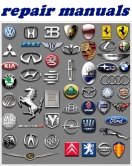Opel Repair Manuals | Opel Kadett replacement of rear brake blocks by clasp brakes
Performance order:
1. At presence remove caps of wheels, then turn off bolts of fastening of rear wheels a little.
2. Hoist a rear of the car and fix on supports.
3. Remove rear wheels.
4. Check up a condition and a thickness of mouldings of brake blocks of rear wheels. Even if deterioration borders were reached only by one brake block, replace rear brake blocks in the complete set.
5. Note an arrangement of the spring supporting brake blocks, then, using a steel rod or a screw-driver, from lateral aspect squeeze out the bottom and top fingers of fastening of brake blocks.
6. Remove a spring supporting brake blocks.
7. Take away brake blocks from a brake plate, then flat-nose pliers take an external brake block and a layer pad established between a brake block and a caliper carrier.
8. Take an internal brake block and a layer pad.
9. Clear a dust and a dirt from a caliper, and a rust from brake plate edge. If pads are suitable to the further operation, clear them, using a wire brush and rags.
10. If new brake blocks are established, press the bucket into a caliper a wooden rod or the hammer handle, thus watch, that the bucket has not warped also a bucket surface has not been damaged...






